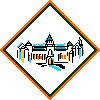
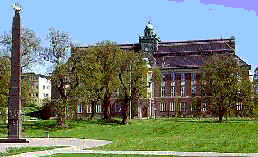
Natur
Historiska Riksmuseet
(Swedish Museum of Natural
History)
Stockholm
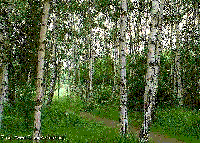
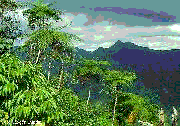
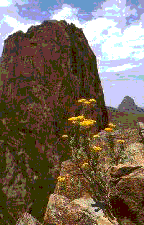
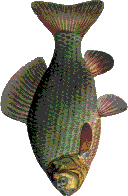






|
|
Field/Online
Collection(s):
|
-Botany, Ichthyology,
Herpetology,
Meteorites & Planetary Science,
Malacology, Mineralogy,
Non-Insect Invertebrates,
Paleobotany
|
 The
Museum has four (4) major Research
Departments (with
extensive online Databases
and Collections
for international research): The
Museum has four (4) major Research
Departments (with
extensive online Databases
and Collections
for international research):
- Botany with
- Geology with
- The Department
of Mineralogy
- The mineral collection comprises some 140,000
catalogued specimens, 51% of which originate from
Swedish deposits. Among the specialities is a very
extensive collection of minerals from the
Långban mines, Filipstad, Värmland
(approximately 25,000 pieces). Classical ore deposits
like Sala, Falun, Malmberget and Boliden are
well-represented, as are minerals from the famous
pegmatite fields of Sweden, like Ytterby, Utö and
Varuträsk.
A computer catalogue of the entire mineral collection
is completed, and currently under revision.
- The meteorite
collection contains about one thousand specimens
from 311 different meteorites. Most Swedish
meteorites are represented, including ca 200 stones
from the Hessle shower in 1869 and four
Muonionalusta irons. The collection is computer
catalogued.
- The topographical
collection consists of 20,000, partly not yet
catalogued minerals, rocks and ores.
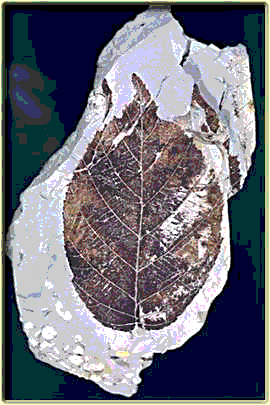
- Palaeontology with
- Department
of
Palaeobotany -
The bulk of the collections come from the Mesozoic of
Sweden and from the Arctic. There are also significant
collections from the Antarctic, South America, and
China, as well as smaller collections from many other
areas of the world. The department houses some 200,000
specimens of fossils plants. The electronic
registration of the fossil plant collections is a
major current ongoing project.
- Department
of
Palaeozoology
- The department keeps extensive research collections
of vertebrate and invertebrate fossils, amassed during
the last 200 years. However, these collections are not
on display and are available only for scientific
studies.
- Zoology with theses
collections:
- The Fish
collections
hold many old specimens dating from the 1740s. Images
and information on the old collections are available
at the museum's Linnaeus
Web Server. It
is estimated that today's fish collection includes
more than 350,000 specimens in about 50,000 lots. More
than 6,350 species are represented. More than 33,226
lots have been computer catalogued. The access to the
computer database can be accessed in three (3)
ways:
Collections are from all
over the world and include representatives of most of
the currently recognised fish families. Important
parts of the fish collection come from South American
and South East Asian freshwaters, and we consequently
concentrate fish research in those areas. Of course,
there is a good representation of Swedish freshwater
fish.
The "commonest" fish species in the collection are
perch (Perca fluviatilis) in 490 jars, african
lungfish (Protopterus annectens) in 487 jars, and
roach (Rutilus rutilus) in 470 jars. Almost all the
collection is preserved in alcohol (75-80% pure
ethanol in distilled water). There are also a few
mounted skeletons, occasional skins, many mounted
fishes, alizarin transparencies for particular
research projects and some otoliths.
- The Herpetological
collections
date from the early 1740s, and are rich in historical
items, including Linnaean types. The Collections
include representatives of most of the currently
recognised families. It is estimated that the
Herpetology collections have a total of about 50,000
specimens in about 10,000 lots. A small portion of
this herpetological material (some 2,000) lots has
been computer catalogued and can be accessed through
their Herpetology
Collection Search
Database.
- The Ornithological
collections
consist of approximately 110,000 study skins, 13,000
skeletons, 1500 alchoholic specimens, 28,000 egg
clutches, and 2400 blood
or tissue
samples. The
collections has a worldwide geographic coverage with
ca. 65% of the species of the World represented in the
skin collection. Besides the western Palearctic, South
America and Southeast Asia are especially well covered
regions. The Skin Collection is considered to be one
of the world's largest. In addition to this gigantic
skin collection there is a more modest
Skeletal
Collection for
both the passerine and non-passerine birds. Finally,
there is an Egg
Collection
consisting of ca 28,000 clutches. Most clutches are of
Palearctic birds but the collection has no geographic
limits and species from the entire world are being
represented. (It is of interest to note that in the
1960's it was discovered that the eggshell of some
raptor species, e.g. the Peregrine Falco
peregrinus, was exceptionally thin and many eggs
chruched under the weight of the incubating bird. By
measuring the thickness of eggs in the collection it
was proven that modern eggs were considerably thinner
than before. It later became evident this was an
effect of the accumulation of DDT in top-predators.
This clearly indicated that something was terribly
wrong in Nature!)
- The Historical
zoological
collections -
contain material dating back to mid 18th century. Most
prominent among those are items preserved from the
collection of King Adolf Fredrik studied by Carl
Linnaeus, and the spider collection of Carl
Clerck.
- The
Museum
Adolphi
Friderici
is shorthand for both the collections maintained by
the King of Sweden, Adolf Fredrik (1710-1771), and
the publications by Carl Linnaeus describing those
collections (Linnaeus, 1754, 1764). The Museum's
Online
Collection
is currently being developed.
- The Invertebrate
collections
comprise about 470.000 lots preserved in ethanol,
dried or on microscope slides. The oldest specimens
were collected during the 18th century. A considerable
part of the collections were acquired towards the end
of the 19th century and in the early 1900s, when
several expeditions brought material to the museum. At
present, most new specimens are acquired as a result
of on-going research projects at the department.
-The type collection (specimens that were used for the
description of new species and introduction of new
scientific names) comprises about 4.500 specimens.
Almost half of the collections are preserved in
ethanol (70-80%) and kept in an underground
storage.
Animals with hard shells, tests or spicules etc., e.g.
molluscs, corals and sponges, are also kept in the dry
collection. Many invertebrates are microscopic and
therefore a part of the collection is mounted on
microscope slides, either as whole mounts or as serial
sections.
- Molluscs
are one of the most important groups of
invertebrates. They live in the sea, on land, and
in fresh water. Many species are of economic
interest or important as indicators of
environmental quality. Furthermore, consequentially
to their long and well documented paleontological
history they play an important role in stratigraphy
and evolutionary research.
- The Molluscs
comprise Chitons, Gastropods, Bivalves,
Octopuses and Squids, Tusk shells and the two
less well known groups, Monoplacophora and
Aplacophora.
The Mollusc Collections
contain about 280.000 dry lots and about 40.000
lots in alcohol. Marine molluscs are well
represented from the Arctic and Antarctic, the
North Atlantic ocean and southern South America.
For land and terrestrial molluscs, Scandinavia and
the Baltic countries are well covered. The dry
collections are mainly uncatalogued; those in
alcohol are manually catalogued with catalogue
number- and genus-species entries in the catalogue.
Computer
cataloguing
is based on an "adapted" Filemaker Pro 4.0
commercial application of Claris Corporation (USA).
The Molluscan
Research
has a long and illustrious history within this
museum.
- Nematodes
are well represented in this rather large
collection of mainly marine nematodes. A large
number of type specimens have been isolated and
registrated. (In Sweden alone more than 700 species
have been found so far. It is estimated that some
100,000 species of nematodes may exist although
about 15,000 species of nematodes are currently
documented worldwide.)
- Tardigrades
(Waterbears) form a small collection of slides.
From 400 known species of tardigrades about 70
species have been recorded from Sweden.
- Polychaetes
(Marine Bristle Worms) are represented here through
a rather large collection both from earlier 19th
century expeditions and from more recent ones.
- Platyhelminths
(Flatworms) are represented through various
collections of old and new material, from the
Swedish South Polar Expedition (1901-1903) to more
recent expeditions from Scandinavia, the British
Isles, the Mediterranean, and the USA.
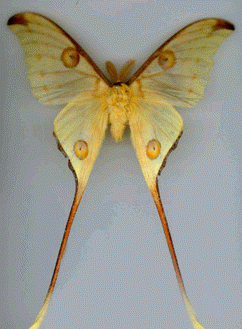 The
Entomological
Collections
contain some 2.5 million specimens. The collections
are international in scope and have a broad systematic
and geographic coverage. A fraction of this vast
collection has been identified online: The
Entomological
Collections
contain some 2.5 million specimens. The collections
are international in scope and have a broad systematic
and geographic coverage. A fraction of this vast
collection has been identified online:
In addition to the Museum's
collections and departments, the Museum maintain a number of
scientific and research centers. Basic biological research
at the Swedish Museum of Natural History concentrates on the
origins of animals and plants, their systematics, and their
distribution in time and space. Studies of tropical
biodiversity are emphasized, as well as the Swedish flora
and fauna.
- Within the area of palaeontology, research is conducted in
both palaeozoology and palaeobotany, including studies of
the origin and development of land plants.
- Geological research at the Museum is concerned with
systematizing the structural and chemical properties of
minerals. At the Laboratory for Isotope Geology, the
development of the earth's crust is studied by determining
the age of rocks and minerals.
- Research on the occurrence of environmental toxins in
nature and their effects on animal life is also conducted at
the Museum. This is devoted to determining the geographical
dispersion of toxins, as well as changes in concentrations
and quantities over time.
The specific scientific
and research centers associated with the Museum are as
follows:
- The Bird
Ringing
Centre
Since the start of bird ringing in Sweden in 1911 more
than eight million individual wild birds have been ringed
and more than 120 000 of them have been recovered. Bird
ringing, as a scientific method, is very important for
our knowledge about reproduction, migration and survival
rates in many bird species.
- The Swedish
Worm Project
(SWORM)
The aims of the SWORM project are:
- (1) to develop the
knowledge of the occurrence and distribution of worms
in Sweden, and thus to clarify which species have a
restricted distribution in the country, and
(2) to use worm fauna as supplementary information in
the assessment of conservational values of various
biota. SWORM thus aims at contributing towards the
documentation and conservation of Swedish
biodiversity.
- Service
Center for Taxonomic Zoology -
Zoo-tax
The Center is involved in zoological consultations and
fauna analyses - sorting and identification of marine,
limnic and terrester invertebrates including insects.
- The
Palynological
Laboratory
The Lab studies the development, ultrastructure,
histochemistry and morphology of pollen grains and
spores, with special reference to taxonomy, as well as
the presence and distribution of pollen and spores in the
air. Pollen and spore service with special emphasis on
the allergenic species is provided daily to the
public.
- The Contaminant
Research
Group
The function of the Contaminant Research Group is to
monitor contaminants in the Swedish natural environment
and their deleterious effects on the fauna. The Research
Group concentrates on studying and assessing time-trends
as well as the spatial variation of contaminants on land,
in lakes, at sea and in the coastal areas of Sweden. The
population of top marine predators is also being
monitored. The environmental specimens collected annually
are stored in the Environmental Specimen Bank. The aim of
contaminant monitoring is to detect undesirable changes
in environmental pollution.
- Laboratory
for Isotope
Geology
At the Laboratory for Isotope Geology it is studied the
ages of minerals and rocks using measurements based on
naturally occurring radioactive isotopes and their
daughter products. Variations in isotopic composition of
different elements also provide information about the
origin of rocks and ores, and are used to trace the
transport of elements in the environment. The Laboratory
for Isotope Geology is the only one of its kind in
Sweden.
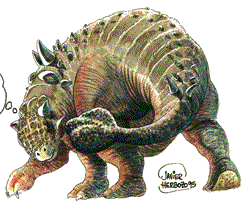
Finally, it goes without saying
that the Museum hosts a number of permanent and temporary
Exhibitions
and that, it is the home of Sweden's largest planetarium
-the Cosmonova.
.
|












 The
The
 The
The The
Historical Botanical Collections are divided int
two (2) sections:
The
Historical Botanical Collections are divided int
two (2) sections:

 The
The